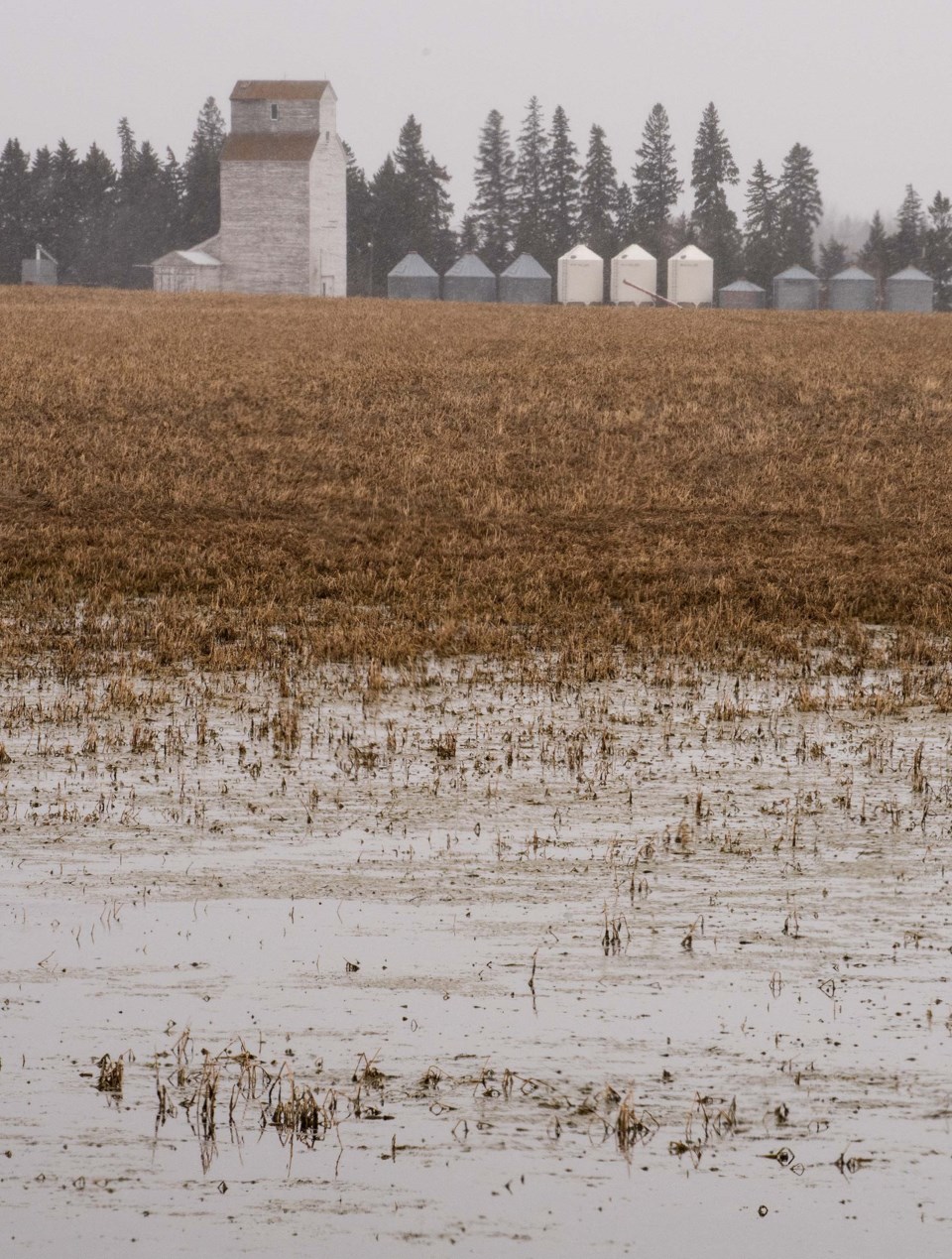How Now Green Cow
How Now Green Cow is examining how farms and food are shaping and being shaped by the climate crisis. Got a food and climate question? Send it to [email protected] so it can be addressed in a future story.
Whether it be canola-crushing hail, flooded fields, or hellish heat, extreme weather conditions have made farming in Alberta and across Canada more challenging and costly than ever.
And that includes the cost of crop insurance to guard against those disasters. Sturgeon County farmer André Montpetit said he used to pay $30,000 a year for crop insurance prior to the COVID-19 pandemic. Nowadays, he pays $92,000.
“Crop insurance is expensive, but we need it. I wouldn’t want to farm without it.”
Costly climate?
Crop insurance refers to a large group of federal and provincial programs which compensate farmers for crop-related losses. The main one is AgriInsurance, which covers crop losses from frost, drought, and other natural disasters.
Crop insurance costs are affected by many factors besides climate, including the cost of crops, number of participants, coverage levels, and the size of payouts.
But wild weather is a big factor, said Saskatchewan farmer Ian McCreary, who led a task force on crop insurance and climate change for the research group Farmers for Climate Solutions in 2022. Severe droughts in Alberta and Saskatchewan in the last three years contributed to record crop insurance payouts and higher premiums.
“We’ve had the three biggest payouts in our history in the last three years, and this year our premiums will be the highest [in 30 years],” said the lifelong farmer.
Gross payments for crop insurance from governments to farmers totalled $3.9 billion in 2023, Statistics Canada notes — about 3.6 times more than what they were in 2013. Gross payments totalled $4.9 billion in 2021, which was the highest in any year in Statistics Canada’s online records (which go back to 2007). These years coincided with both high crop prices and massive droughts, floods, and other climate disasters on the Prairies.
Climate change means more fire, hail, droughts, and wild weather, which means more crop losses and insurance payouts, said University of Alberta resource economics professor Henry An. That makes insurance riskier and more expensive. Today’s extreme weather events also affect huge swaths of Alberta instead of just a few farms, resulting in bigger payouts.
“In 2021, Alberta had a $2.1 billion, with a ‘B’, payout,” he said, with Saskatchewan paying out $2.6 billion.
“Nobody really thinks these numbers are going to go down. If anything, they’re going to be trending upwards.”
While crop insurance can protect farms against climate disasters, An said it also presents a “moral hazard” that can discourage farmers from climate action — why dig dugouts if you have insurance to bail you out of a drought?
The Farmers for Climate Solutions task force led by McCreary found crop insurance can encourage farmers to convert forests, grasslands, and wetlands to crops, resulting in significant greenhouse gas emissions. Insured crops were also more vulnerable to extreme weather events than uninsured ones, in part because the insurance displaced risk-reducing practices such as crop diversification and cover cropping.
Compounding this moral hazard is the fact farmers don’t bear the full cost of crop insurance. Farmers pay for just 40 per cent of their premiums for AgriInsurance, with federal and provincial tax dollars covering the rest.
“You’re not going to get rid of crop insurance any time soon, but it’s also not sustainable in its current form,” An said.
Better insurance
McCreary's task force called on governments to encourage on-farm climate action by tying best management practices to crop insurance. This could mean offering cheaper coverage if farmers meet crop diversity requirements, for example, or providing insurance for farmers to try out resilience-boosting practices such as cover-cropping.
Some jurisdictions have already made steps in this direction. P.E.I. gives farmers a three per cent discount on their premiums if they complete environmental farm plan training, for example, while the European Union requires farmers to preserve native grasslands in order to get money under its Green Direct Payment program.
There are risks to pairing insurance to specific farm practices, An said. Farms vary considerably, and what works for one farm might not work for another. Some disasters are also big enough to overwhelm any measures a farmer might take.
McCreary said the best way to keep crop insurance costs in check was to actually address climate change. That means putting a price on carbon, and boosting farm resilience through solar panels, geothermal heat, precision nitrogen application, preserving natural areas, and intercropping, all of which he had implemented on his farm.
“We have known for 40 years that climate change is making everything riskier. What needs to happen is we need to be serious about solving the problem of climate change.”




